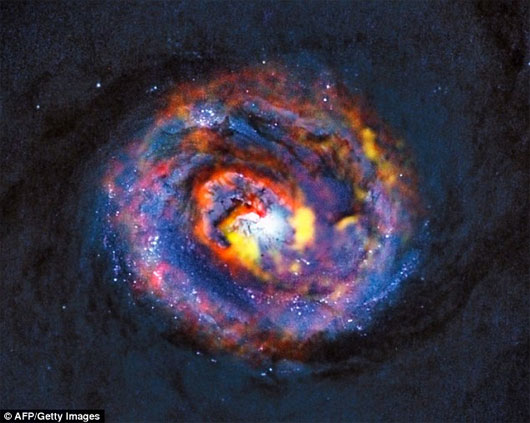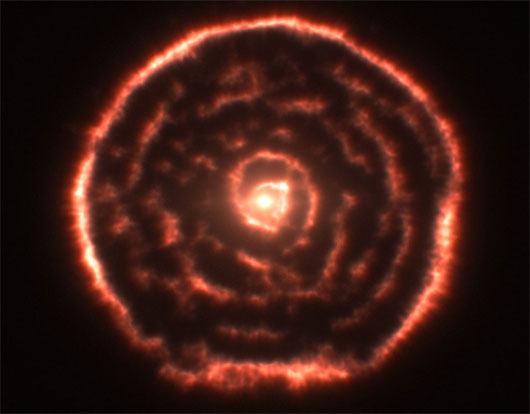Evidence of the power of black holes
Two groups of international astronomers have taken horrifying images of a giant black hole greedily "gobbling up" a large amount of material.
The photos were taken at the Southern European Observatory, using the world's largest ALMA terrestrial telescope. They show close-up of nozzles (jet) of giant black holes in the center of galaxies and their impact on the surrounding area.

This picture shows in detail the central parts of the active galaxy NGC 1433. (Photo: Getty Images)
According to astronomers, when gas and dust are sucked into the center of the black hole, part of the material is blown out and accelerated under the effect of a magnetic field around the black hole, forming nozzles. brilliant, can be observed throughout the universe.
At the center of most galaxies in the universe, including our own Milky Way, are huge black holes, with the mass equivalent to the total mass of billions of suns. In the distant past, these strange celestial bodies were very active, "gobbling up" numerous material from the surrounding area, glowing brightly and discharging tiny pieces of material through nozzles. very strong.
At present, most of the "super" large black holes are less active than they were in their youth, but the interaction between the black hole's nozzles and their surrounding areas is still shaping the development of Galaxy.
Two new studies published in the journal Astronomy & Astrophysics have used the ALMA telescope to investigate black hole nozzles at very different scales: a near, relatively quiet black hole in NGC galaxy 1433 and a black hole, very far away and active, called PKS 1830-211 .

A close-up of an amazing spiral structure around the old star R Sculptoris.(Photo: ESO)
Françoise Combes, expert of the Paris Observatory (France) and the first research leader, said: "ALMA has revealed an incredible twisted structure of gas molecules near the center of NGC 1433. This explains how the sucked thing flows into a stream to fuel the black hole . We also found a material nozzles from the black hole, which stretches for only about 150 light-years. The smallest molecular flow of this type was observed in an outer galaxy (our Milky Way) ".
In the case of PKS 1830-211, researcher Ivan Martí-Vidal from the Onsala Space Observatory (Sweden) and colleagues also observed an extremely large black hole brighter and actively moving. than. This is a proof of the process over time, the "super-massive" black hole abruptly absorbs a huge amount of matter, increasing the power of the nozzle and increasing heat radiation to the highest energy level.
- Detected stunned the power of the supermassive black holes
- Millions of black holes are hiding in our galaxy
- Decoding mistakenly thought that the black hole of the universe is
- Discover the mystery of the most exotic black holes in the universe
- Can destroy a cosmic black hole?
- Three huge black holes are about to collide in the universe
- Why can black holes glow?
- 'Ghost' super black hole with 800 million Sun revealed a strange phenomenon
- Does the hypothesis of a black hole exist?
- Unexpectedly discovered 5 mysterious black holes in the universe
- The galaxy has 3 black holes
- For the first time, two black holes revolved around each other
 Van Allen's belt and evidence that the Apollo 11 mission to the Moon was myth
Van Allen's belt and evidence that the Apollo 11 mission to the Moon was myth The levels of civilization in the universe (Kardashev scale)
The levels of civilization in the universe (Kardashev scale) Today Mars, the sun and the Earth are aligned
Today Mars, the sun and the Earth are aligned The Amazon owner announced a secret plan to build a space base for thousands of people
The Amazon owner announced a secret plan to build a space base for thousands of people